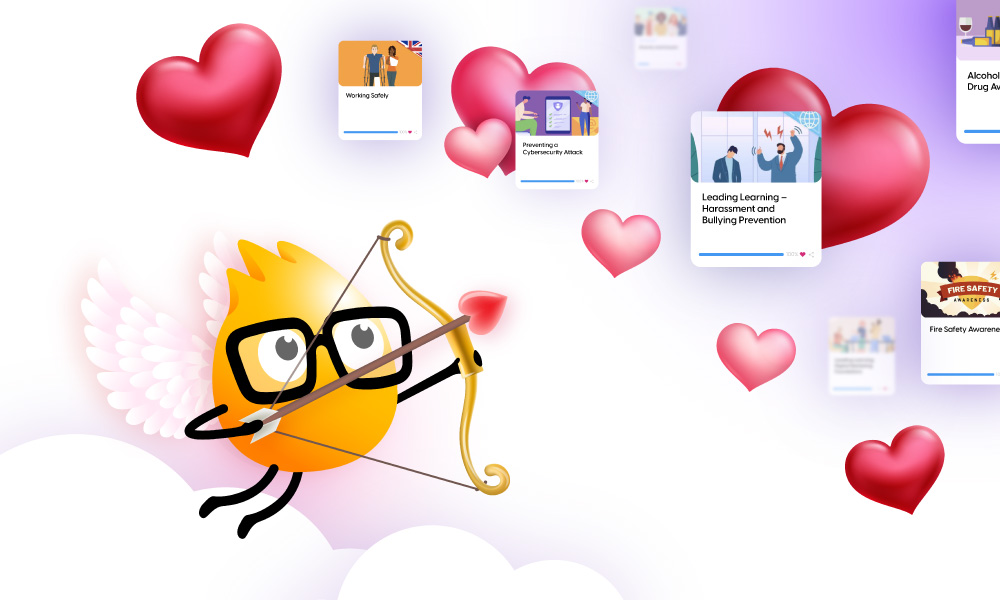Seven Common Gamification Mistakes and How to Avoid Them
Do you want to play a game? Head over to LinkedIn and post, ‘What is gamification, and how can it improve my e-learning?’ Then, watch the varied and often misunderstood responses roll in…
Many well-meaning L&D professionals still get gamification wrong. It’s not just about adding points, badges, and leaderboards. The real power of gamification lies in increasing comprehension and retention through thoughtful design. Common mistakes include focusing on gamification for its own sake and losing sight of training goals. Enthusiasm and gimmicks aren’t enough; understanding and applying good gamification principles is key to unlocking its potential.
Avoid these gamification mistakes
With the market for game-based learning predicted to grow by 21.9% every year until 2026, you will need your head in the game to avoid these common gamification pitfalls:
- Gamifying for gamification’s sake
Slapping points, badges, and leaderboards onto a training program doesn’t create an effective learning experience. The key is ensuring these elements have meaningful connections to the learning objectives. For instance, badges should signify the mastery of specific skills to genuinely motivate learners. - Using poor game design
Gamification is more than just making your course look like a game. To be effective, it must tap into motivational psychology. The first step is ensuring the game mechanics support your learning objectives. - Losing sight of the objective
Games should support and enhance the learning process, not overshadow it. In-game achievements should correlate with learning milestones, and the level of challenge should keep learners motivated but not frustrated. - Leaning on leaderboards
Leaderboards can be a double-edged sword. While they can foster healthy competition, they may also demotivate learners who consistently rank last. Consider alternative approaches, such as team-based competition or progress tracking, which emphasize personal improvement over relative ranking. The concept of ‘leveling up’ based on individual progress can also be more inclusive and motivating. - Stereotyping gamers
It’s a misconception that only younger employees enjoy gamified learning. According to the Entertainment Software Association, a significant percentage of gamers are over the age of 50, and 45% of gamers are women. Gamification should cater to diverse demographics, so always consider the varied interests and preferences of your workforce. - Not catering to different preferences
On that note, not everyone enjoys games. Offering a non-gamified alternative ensures inclusivity. For example, if your training involves a gamified mobile app with quizzes, provide an option to complete the quizzes without the game context. This respects individual preferences and enhances accessibility. - Too much, too soon
You don’t need to overhaul your entire L&D program. Start with a pilot project—such as a single course or module—and add one gamified element to test its effectiveness. Many learning platforms, including Litmos, have built-in gamification features that can streamline this process. Gradually scale up these elements based on feedback, user observations, and completion rates.
Ready player one?
Gamification is about applying game design principles to non-game contexts, such as e-learning, to make the experience more interactive and rewarding. Done well, it can boost engagement, increase motivation, and improve knowledge retention. Here are some tips to increase the playability of your courses without necessarily building a ‘game’:
- Narrative-based learning
Many of the best computer games have a compelling storyline. Delivering educational material within an intriguing narrative ensures learners become invested in the story and, by extension, the learning process. This approach leverages our natural human affinity for storytelling and can significantly enhance engagement and retention. - Progression and unlocking content
Use formative assessment as an ‘end of level boss’ before the next level can be accessed. This can create a sense of accomplishment and encourage continued participation without relying on obvious game elements. For example, completing a module might reveal a new video or interactive scenario, giving learners a tangible reward for their effort. - Personalized learning paths
Use adaptive learning technologies to create personalized learning paths based on the learner’s performance and preferences. This approach can subtly gamify the experience by tailoring challenges and content to each learner’s needs, providing a sense of individualized progression and mastery. - Microlearning and missions
Break down the content into small, manageable chunks and present these as challenges or missions. Each completed chunk results in immediate feedback and a sense of accomplishment. This technique maintains engagement and interest by providing frequent, low-pressure opportunities for success. - Interactive elements and simulations
Employ interactive simulations and scenario-based learning that require learners to make decisions and experience the consequences of their actions. Allow learners to correct a fatal decision and ‘respawn,’ boosting both engagement and practical understanding of the topic. - Social learning and collaboration
Foster collaborative learning with discussion forums and group projects. Add elements like collaborative problem-solving and peer feedback to create an engaging, ‘multi-player’ environment. - Intrinsic motivation and mastery
Design activities that provide learners with a sense of autonomy (control over their learning), opportunities to demonstrate competence (mastery of skills), and connections with others (social interaction). This approach can make the learning experience inherently rewarding without using overt game mechanics.
Once you’ve mastered these techniques, consider adding ‘Easter eggs’ to your courses. These hidden rewards can provide bonus information, fun facts, or extra resources, adding surprise and delight to the learning process. This way, you can offer ‘nice to have’ information alongside essential content without increasing cognitive load. Also, consider the ‘replayability’ of your courses. Will returning learners grudgingly ‘press play’ or jump at the chance to discover something new each time?
There are no ‘cheat codes’ for this. The best learning design listens to and understands the learner’s needs, their environment, and their organization’s goals. Keep exploring and refining your approach, and you’ll find gamification to be a powerful tool in your L&D arsenal. Ready to power up your e-learning? Let the games begin!
Want even more information on gamification trends and benefits? Check out this Gamification in eLearning infographic.




